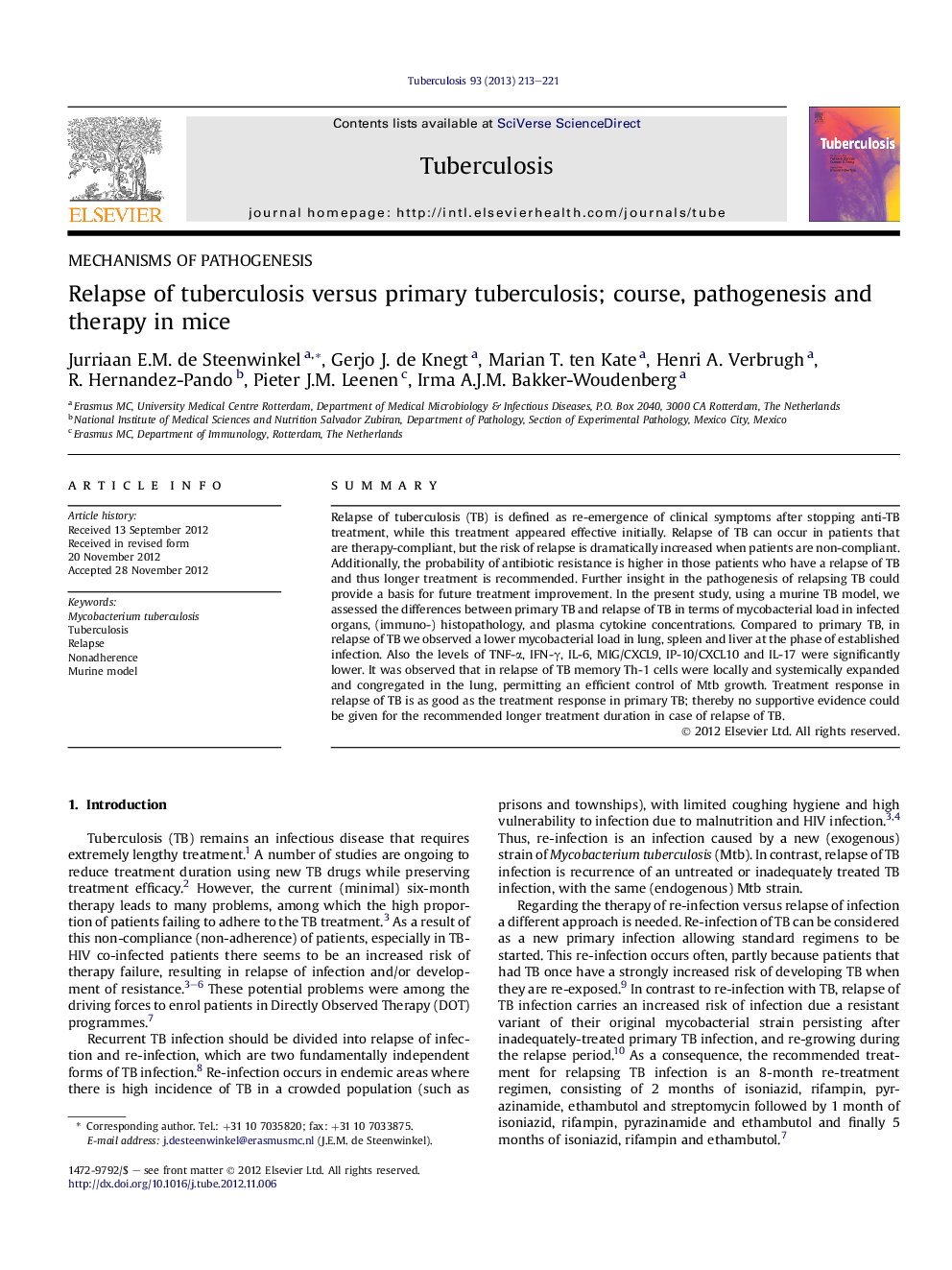| Article ID | Journal | Published Year | Pages | File Type |
|---|---|---|---|---|
| 10962094 | Tuberculosis | 2013 | 9 Pages |
Abstract
Relapse of tuberculosis (TB) is defined as re-emergence of clinical symptoms after stopping anti-TB treatment, while this treatment appeared effective initially. Relapse of TB can occur in patients that are therapy-compliant, but the risk of relapse is dramatically increased when patients are non-compliant. Additionally, the probability of antibiotic resistance is higher in those patients who have a relapse of TB and thus longer treatment is recommended. Further insight in the pathogenesis of relapsing TB could provide a basis for future treatment improvement. In the present study, using a murine TB model, we assessed the differences between primary TB and relapse of TB in terms of mycobacterial load in infected organs, (immuno-) histopathology, and plasma cytokine concentrations. Compared to primary TB, in relapse of TB we observed a lower mycobacterial load in lung, spleen and liver at the phase of established infection. Also the levels of TNF-α, IFN-γ, IL-6, MIG/CXCL9, IP-10/CXCL10 and IL-17 were significantly lower. It was observed that in relapse of TB memory Th-1 cells were locally and systemically expanded and congregated in the lung, permitting an efficient control of Mtb growth. Treatment response in relapse of TB is as good as the treatment response in primary TB; thereby no supportive evidence could be given for the recommended longer treatment duration in case of relapse of TB.
Related Topics
Life Sciences
Immunology and Microbiology
Applied Microbiology and Biotechnology
Authors
Jurriaan E.M. de Steenwinkel, Gerjo J. de Knegt, Marian T. ten Kate, Henri A. Verbrugh, R. Hernandez-Pando, Pieter J.M. Leenen, Irma A.J.M. Bakker-Woudenberg,
